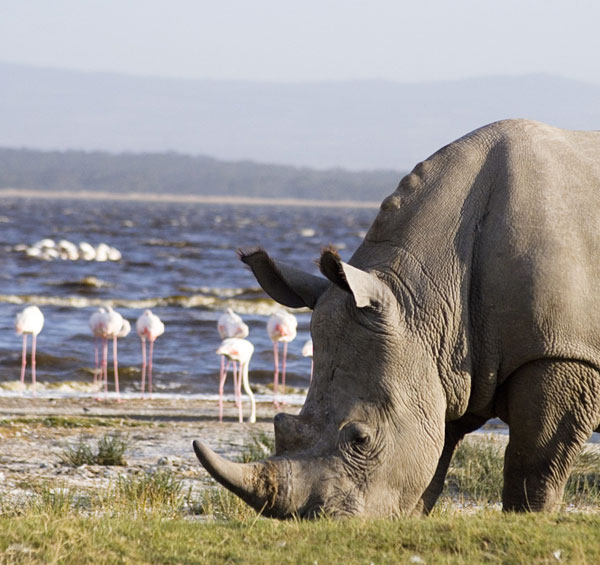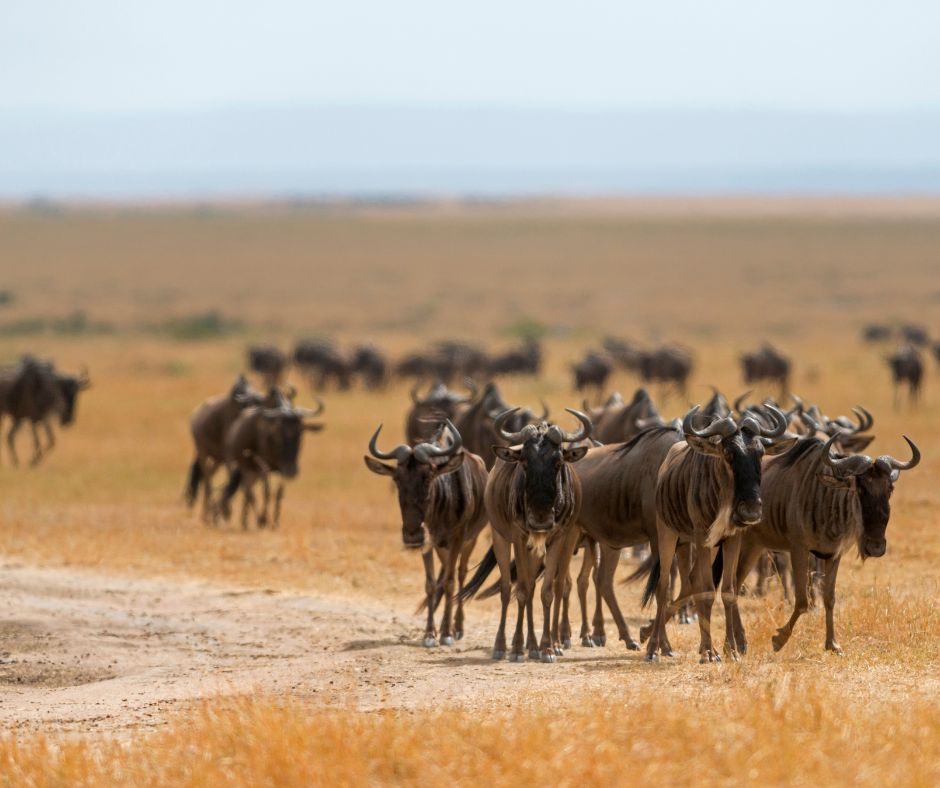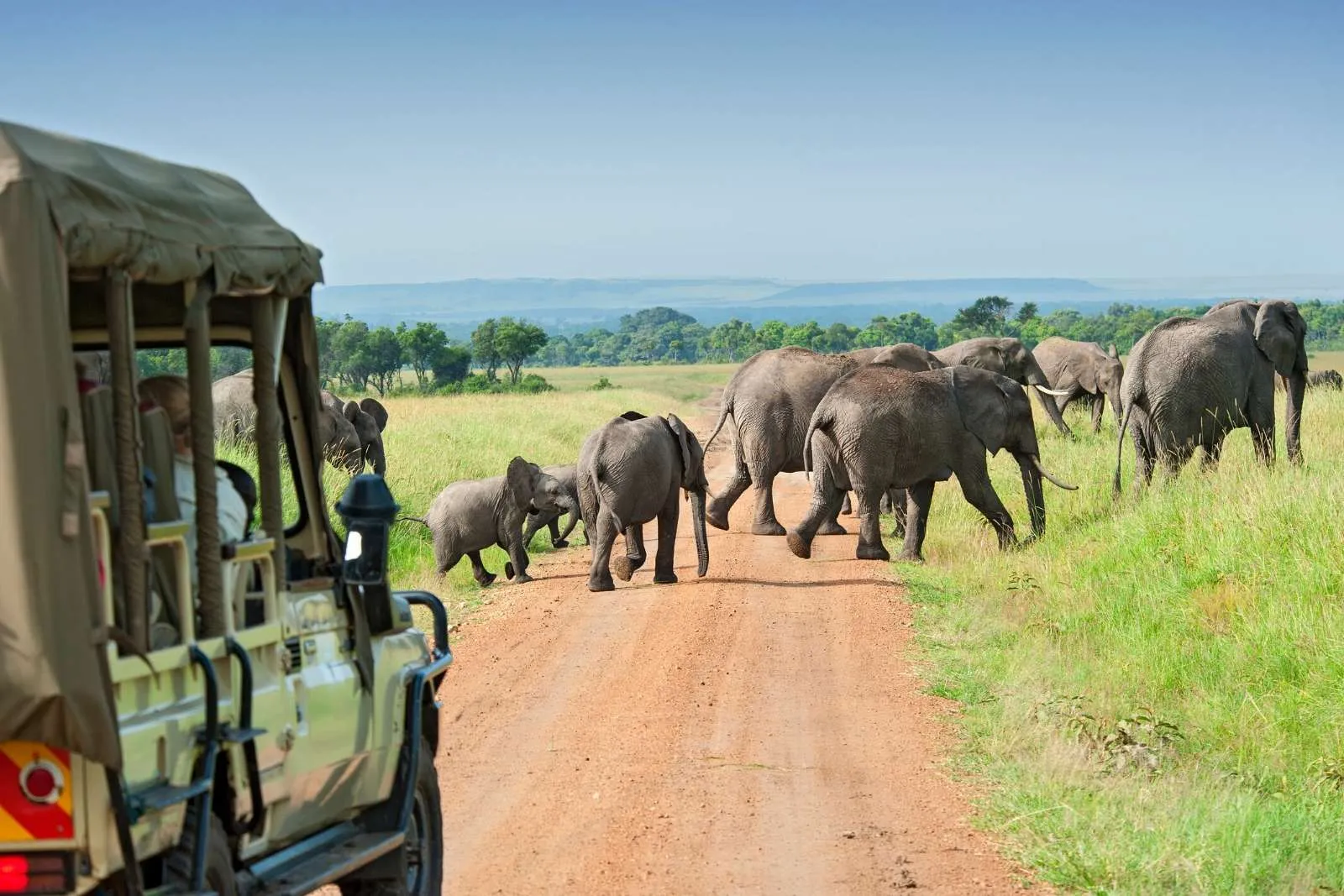Lake Nakuru National Park is one of Kenya’s most famous and beautiful national parks, known for its stunning scenery, diverse wildlife, and rich birdlife. Located in the Great Rift Valley, it is renowned as a birdwatching paradise and is especially famous for its large population of flamingos, which gather around the lake’s shores. The park is also home to a wide range of mammals, including the Big Five — lion, leopard, elephant, buffalo, and rhino.
Location and Size
- Location: Lake Nakuru National Park is situated about 160 kilometers (99 miles) north of Nairobi, making it easily accessible for day trips or short safaris. It lies on the floor of the Great Rift Valley, near the town of Nakuru.
- Size: The park covers an area of around 188 square kilometers (73 square miles), and the lake itself is one of the largest soda lakes in the Rift Valley.
Lake Nakuru and its Significance
- Lake Nakuru is the heart of the national park and is an alkaline lake known for its high levels of salt content. The lake is famously visited by thousands of flamingos, which gather here to feed on the algae that thrive in the alkaline water. At its peak, the lake can have up to two million flamingos, although the numbers can vary depending on water levels and food availability.
- Flamingos and Other Birdlife: Lake Nakuru is not only home to flamingos but is also a haven for over 400 species of birds, including pelicans, herons, storks, and eagles, making it a top destination for birdwatchers.
Wildlife and Biodiversity
In addition to the extraordinary birdlife, Lake Nakuru National Park is rich in wildlife. The park is particularly notable for its conservation efforts with black rhinos and white rhinos, which are a major draw for visitors.
- Rhinos: Lake Nakuru is home to one of Kenya’s largest rhino sanctuaries, where visitors can see both black and white rhinos in a protected environment. The park has had significant success in the conservation of these species, and the rhinos are frequently seen near the lake or in the surrounding woodlands.
- Other Mammals: The park also houses a variety of other mammals, including lions, leopards, cheetahs, buffaloes, zebras, giraffes, impalas, and waterbucks. Colobus monkeys are also commonly seen in the forested areas of the park.
- Large Mammals: Elephants and giraffes are often seen roaming the savannah, while hippos and crocodiles can be found in the lake itself.
- Predators: The park is home to a number of predators, including lions, which can often be seen patrolling the edges of the lake, and leopards and cheetahs, which hunt in the park’s open areas.
Landscape and Terrain
Lake Nakuru National Park offers diverse landscapes, from open savannahs and woodlands to dense forests. The lake itself is surrounded by acacia trees and scrubland, which provide cover for both herbivores and predators.
- The park’s elevation varies between 1,750 meters (5,741 feet) to 2,000 meters (6,561 feet) above sea level, providing a cool climate and views over the surrounding area.
- Nakuru Hills provide an excellent vantage point for panoramic views of the park and the lake below.
Activities
Visitors to Lake Nakuru National Park can enjoy a variety of activities:
- Game Drives: The main activity in the park is game viewing, with early morning and late afternoon game drives providing the best opportunities to see wildlife. The park’s compact size makes it easy to spot a wide range of animals, including the Big Five.
- Birdwatching: Lake Nakuru is a top destination for birdwatching, especially for those interested in seeing flamingos and other waterbirds. The lake and its surrounding marshlands are ideal for bird enthusiasts to observe species such as pelicans, marabou storks, and African fish eagles.
- Nature Walks: Some parts of the park offer guided nature walks, allowing visitors to explore the park on foot and gain insight into the flora, fauna, and ecosystems of the area. Walking safaris provide a different perspective and an opportunity to observe smaller creatures that may not be noticed during a game drive.
- Photography: Lake Nakuru’s stunning landscapes, vibrant birdlife, and close encounters with wildlife make it an excellent destination for photographers. The lake and the surrounding hills provide fantastic backdrops for wildlife photography.
- Lookout Points: The Baboon Cliff offers spectacular views of the park, providing an excellent opportunity to observe the wildlife and take photographs of the expansive landscape.
Accommodation
Lake Nakuru National Park offers a range of accommodations to suit different budgets:
- Luxury Lodges: For high-end stays, options include Lake Nakuru Lodge, which provides comfortable accommodations with beautiful views of the lake. The Sarova Lion Hill Game Lodge is another luxury choice with modern amenities and excellent game-viewing opportunities.
- Mid-Range: Flamingo Hill Camp offers a more affordable yet comfortable option, with well-appointed tents and easy access to the park’s game viewing areas.
- Budget Accommodation: There are also budget-friendly options like the Nakuru Sopa Lodge, which offers good value for money while still being close to the park.
Conservation Efforts
Lake Nakuru National Park plays a significant role in wildlife conservation in Kenya. The park is particularly famous for its work in rhino conservation, and it is one of the most important protected areas for rhinos in Kenya. The park is also home to the Lake Nakuru Trust, an organization that works to protect the lake’s unique ecosystem and support wildlife conservation efforts.
How to Get There
- By Road: Lake Nakuru National Park is easily accessible by car from Nairobi (about 2-3 hours’ drive). The park can be reached by the Nakuru-Nairobi Highway, and the park entrance is a short drive from the town of Nakuru.
- By Air: There are domestic flights available from Nairobi to Nakuru Airport, followed by a short drive to the park. The park is also served by charter flights from Nairobi and other regional airports.
Conclusion
Lake Nakuru National Park is a must-visit destination for safari enthusiasts, birdwatchers, and nature lovers. The park’s stunning lake, vibrant wildlife, and incredible birdlife make it one of Kenya’s most accessible and rewarding safari locations. Whether you’re drawn by the sight of flamingos, the excitement of spotting a lion or leopard, or the opportunity to photograph beautiful landscapes, Lake Nakuru offers an unforgettable safari experience.








